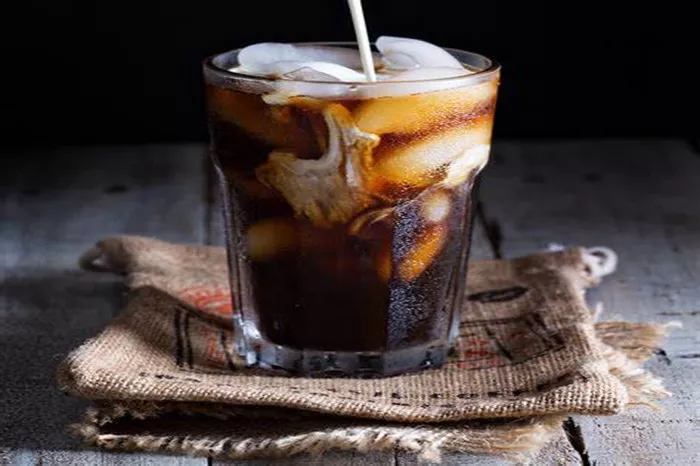Cold brew coffee is a refreshing and smooth way to enjoy coffee, made by steeping coarsely ground coffee beans in cold water for an extended period—usually 12 to 24 hours. This slow extraction process brings out the rich, chocolatey, and less acidic flavors of coffee, making it a favorite among coffee lovers.
The quality of the coffee grounds plays a crucial role in the final taste of cold brew. Freshly ground, high-quality beans provide the best flavor extraction, resulting in a balanced and robust brew. Many coffee drinkers wonder whether they can reuse coffee grounds to make cold brew as a way to save money and reduce waste. Let’s explore this idea in detail.
Can You Reuse Coffee Grounds?
Technically, yes, you can reuse coffee grounds to make cold brew, but the results may not be ideal. After the first extraction, the coffee grounds have already released most of their essential oils, flavors, and caffeine, leading to a weaker and less satisfying brew.
Potential Drawbacks of Reusing Coffee Grounds
Weaker Flavor: The first brew extracts the most desirable flavors. A second brew will be noticeably weaker and might taste stale or flat.
Reduced Caffeine Content: The majority of the caffeine is already extracted during the initial brewing process, meaning reused grounds will produce a much lower-energy beverage.
Bitter or Sour Taste: Over-extracted grounds can lead to a bitter taste, while under-extracted grounds may produce a sour, unpleasant flavor.
Risk of Bacterial Growth: If used grounds are left sitting too long before reuse, they can develop mold or bacteria, which could make the coffee unsafe to drink.
Alternative Uses for Coffee Grounds
Instead of reusing coffee grounds for another batch of cold brew, consider these alternative ways to make the most of them:
Composting: Coffee grounds are rich in nitrogen, making them an excellent addition to compost bins or garden soil.
Skincare: The texture of coffee grounds makes them a great natural exfoliant for scrubs and masks.
Odor Neutralizer: Used coffee grounds can absorb unwanted odors in refrigerators, garbage disposals, or even on your hands after handling strong-smelling foods like garlic and onions.
Cleaning Agent: Their abrasive texture can help scrub tough stains on pots, pans, and sinks without the need for harsh chemicals.
Pest Repellent: Sprinkling coffee grounds around plants can help deter ants, slugs, and other pests.
Tips for Stretching Coffee Grounds
If you’re looking to get more out of your coffee grounds while still maintaining quality, here are some tips:
Combine Fresh and Used Grounds: Instead of reusing coffee grounds alone, mix them with a portion of fresh grounds. This can help balance flavor and caffeine levels.
Adjust the Brew Time: If you must reuse grounds, consider extending the steeping time by a few extra hours to extract more flavor.
Modify the Water-to-Coffee Ratio: Using slightly less water than usual when re-brewing can help concentrate the flavor, though it won’t fully restore the lost richness.
Make Coffee Ice Cubes: If the reused coffee is too weak for drinking, freeze it into ice cubes and use them in future coffee drinks to prevent dilution.
Use in Recipes: Weak cold brew made from reused grounds can be repurposed in recipes like coffee smoothies, marinades, or baked goods.
Sustainability and Cost-Saving Benefits
Reusing coffee grounds can contribute to sustainability efforts by reducing waste. While it might not be ideal for making another batch of cold brew, finding alternative uses for spent grounds minimizes environmental impact.
Cost-Saving Considerations
Minimal Savings for Cold Brew: Since reused grounds produce a much weaker coffee, the cost savings might not be significant enough to justify the drop in quality.
Better Savings Through Alternative Uses: Using coffee grounds in composting, cleaning, or skincare can save money on other products, making better use of spent grounds.
Conclusion
While it is technically possible to reuse coffee grounds for cold brew, the resulting coffee will be much weaker, lower in caffeine, and less flavorful. If you are a true coffee lover, the trade-off in taste and quality may not be worth it.
Instead of re-brewing coffee grounds, consider alternative ways to repurpose them, such as composting, skincare, and odor absorption. If you do want to stretch your coffee supply, mixing fresh and used grounds can provide a compromise without sacrificing too much flavor.
Ultimately, the best cold brew comes from using fresh, high-quality coffee grounds. But don’t be afraid to experiment and see what works best for your preferences!
Related topics:
- How Much Caffeine Is in a Chocolate Cream Cold Brew?
- What to Do with Cold Brew Coffee Grounds
- Why Is Nitro Cold Brew More Caffeinated?


